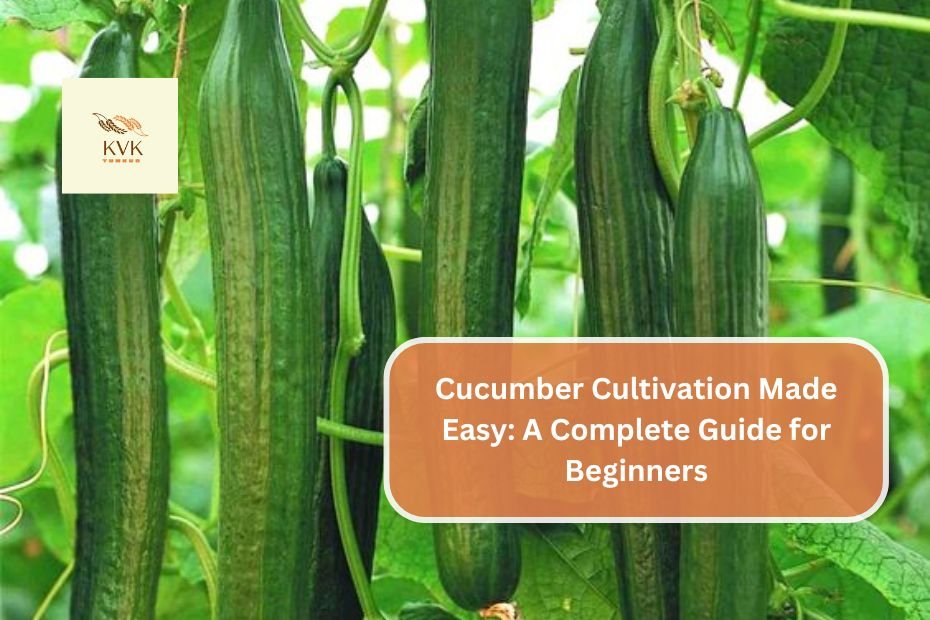Cucumbers are a popular and rewarding crop to grow, whether you have a small garden or a larger farming operation. This comprehensive guide will walk you through the key steps to successfully cultivate cucumbers, from choosing the right variety to harvesting your fresh produce.
Selecting the Right Variety
There are many cucumber varieties to choose from, each with its own characteristics:
- Slicing Cucumbers: These are the most common type, grown for fresh eating. Popular varieties include Marketmore, Dasher II, and Straight Eight.
- Pickling Cucumbers: Bred for making pickles, these tend to be smaller with thicker skins. Some good pickling varieties are Calypso, National Pickling, and H-19 Little Leaf.
- English/Persian Cucumbers: These have thin, unwaxed skins and fewer seeds. They are often grown in greenhouses or high tunnels. Varieties include Diva, Iznik, and Socrates.
- Mini Cucumbers: Also called Persian or Beit Alpha type, these are small, sweet, and seedless. Varieties like Picolino and Katrina are perfect for snacking.
Consider your climate, growing conditions, and intended use when selecting a variety. For example, pickling cucumbers need to be harvested at a specific size for processing.
Planting Cucumbers
Cucumbers thrive in warm soil, so wait to plant until after your last spring frost. The ideal soil temperature for planting is 65°F (18°C) or higher.
- Direct Seeding: This is the easiest method. Plant seeds 1-2 inches (2.5-5 cm) deep and 12 inches (30 cm) apart in rows spaced 3-4 feet (0.9-1.2 m) apart. Thin seedlings to 18-24 inches (45-60 cm) apart.
- Transplanting: Start seeds indoors 3-4 weeks before your last frost date. Sow seeds 1/2 inch (1 cm) deep in containers. Transplant seedlings after hardening them off for 7-10 days. Space transplants 18-24 inches (45-60 cm) apart.
Cucumbers require full sun, at least 6 hours per day. Amend soil with compost or aged manure before planting to provide nutrients.
Trellising and Pruning
Trellising cucumbers has many benefits:
- Keeps fruit off the ground, reducing disease and pest problems
- Maximizes space in the garden
- Improves air circulation around plants
- Produces straighter, more uniform fruit
Use a trellis, cage, or fence to support the vines. Train the main vine up the support and prune off any suckers that emerge from the leaf axils. This focuses the plant’s energy into producing fruit rather than excessive foliage.
Watering and Fertilizing
Cucumbers need consistent moisture, about 1-2 inches (2.5-5 cm) per week. Water at the base of plants to keep foliage dry and prevent disease. Mulch around plants to retain moisture.Fertilize cucumbers with a balanced, water-soluble fertilizer every 2-3 weeks. Look for a formula with an N-P-K ratio like 10-10-10 or 20-20-20. Avoid over-fertilizing, which can lead to excessive vine growth at the expense of fruit production.
Pest and Disease Management
Some common cucumber pests include:
- Cucumber beetles: Yellow and black striped or spotted beetles that feed on leaves, stems, and fruit. Use row covers or hand-pick beetles.
- Aphids: Suck plant juices and spread viruses. Spray with insecticidal soap or introduce beneficial insects like ladybugs.
- Spider mites: Tiny pests that feed on undersides of leaves. Spray with a strong stream of water or use insecticidal soap.
Common diseases include:
- Powdery mildew: White fungal growth on leaves. Use resistant varieties and provide good air circulation.
- Downy mildew: Causes yellow spots on leaves. Avoid overhead watering and use drip irrigation.
- Bacterial wilt: Causes wilting and death of plants. Control cucumber beetles which spread the disease.
Practicing good sanitation, crop rotation, and using disease-resistant varieties can help prevent many cucumber problems.
Harvesting and Storage
Cucumbers are ready to harvest when they reach the desired size, usually 6-8 inches (15-20 cm) long for slicers. Harvest regularly to encourage more fruit production. Cut cucumbers from the vine with pruners or scissors, leaving a short stem attached.Cucumbers are best eaten fresh, but can be stored in the refrigerator for 3-5 days. For longer storage, pickles can be made by fermenting or canning cucumbers.
Conclusion
With the right variety selection, proper planting, and attentive care, anyone can successfully grow cucumbers. Trellising, consistent moisture, and pest management are key to maximizing your harvest. Enjoy your fresh, homegrown cucumbers in salads, sandwiches, and pickles all season long!
| HOME | CLICK HERE |
| CATEGORY | CLICK HERE |

